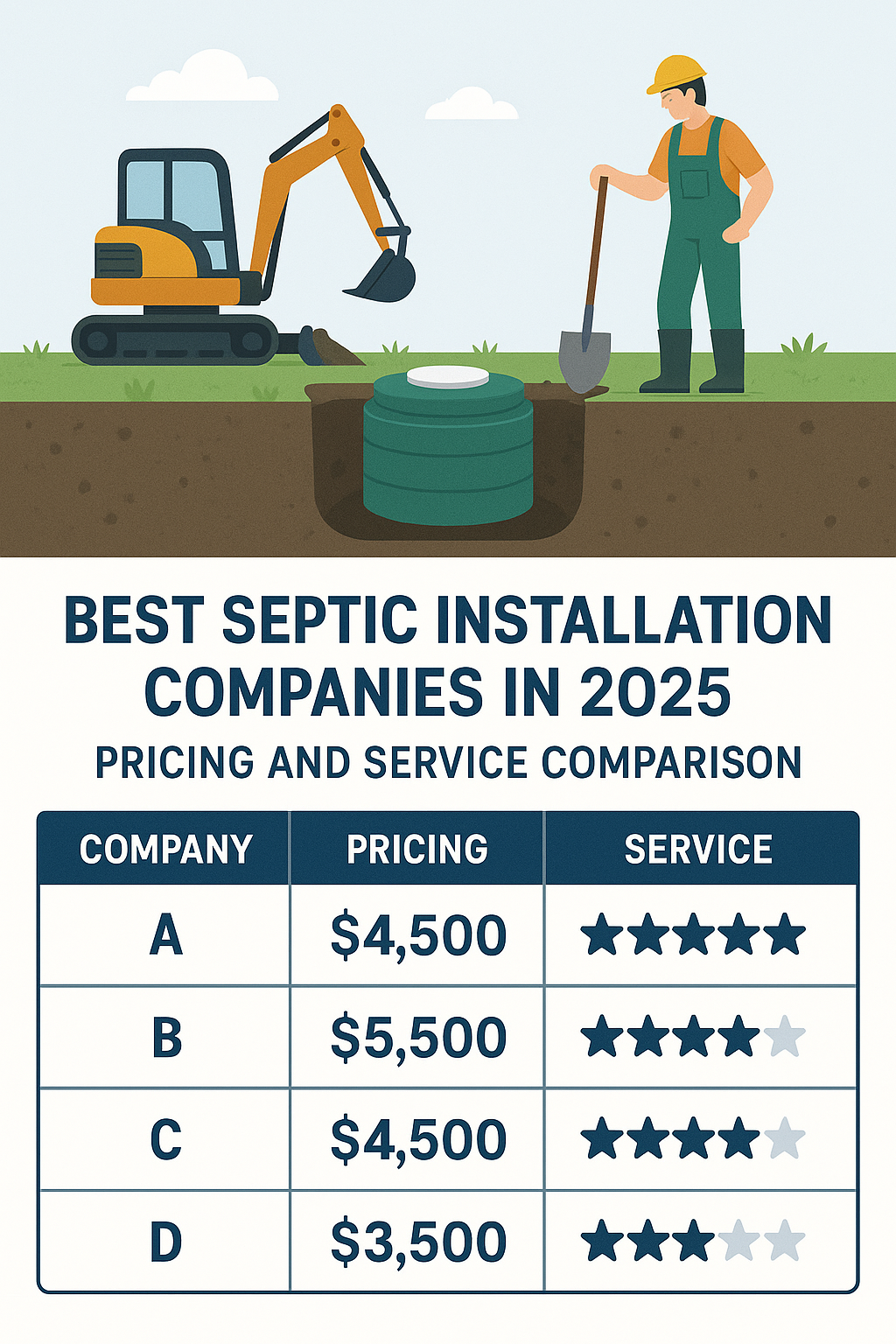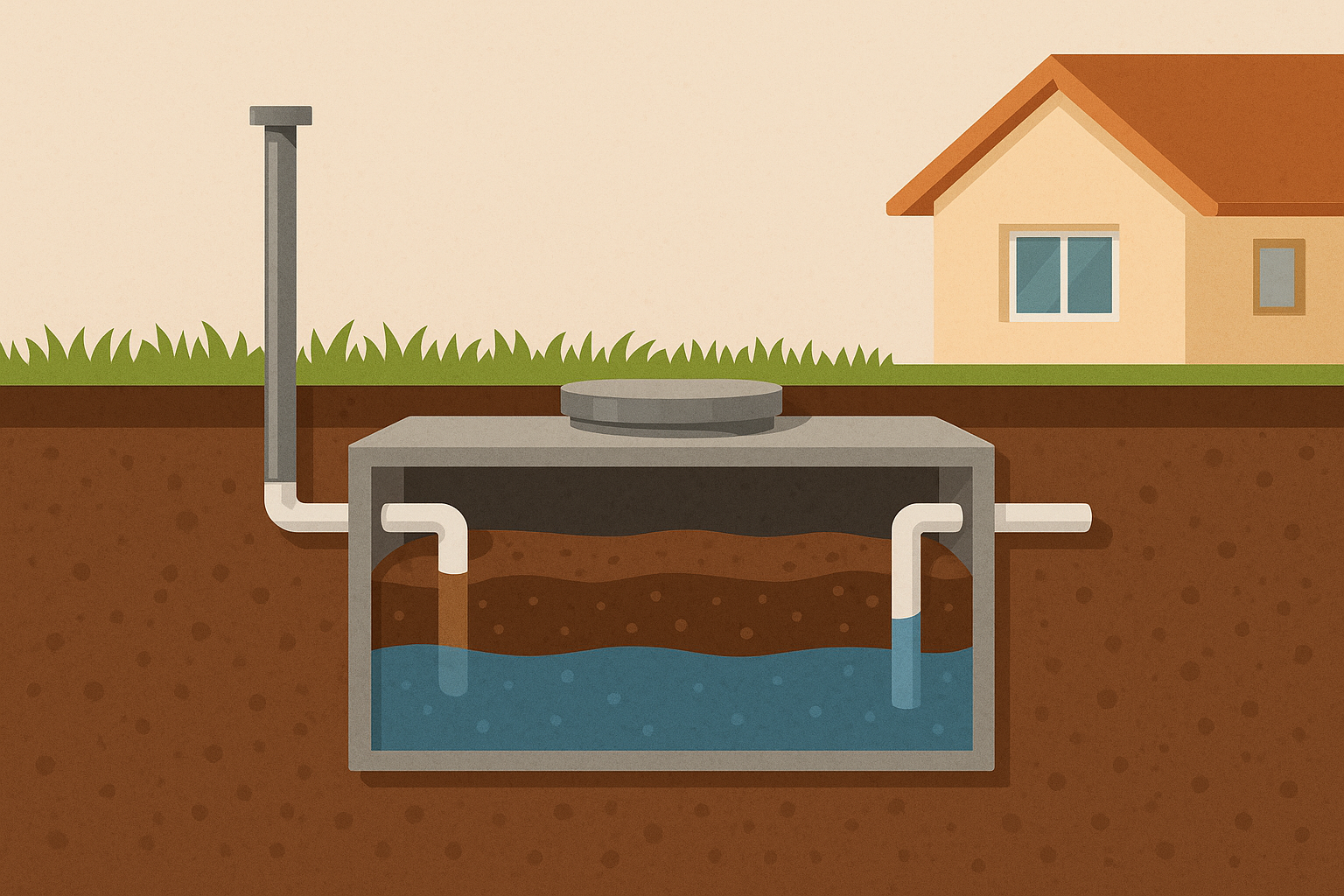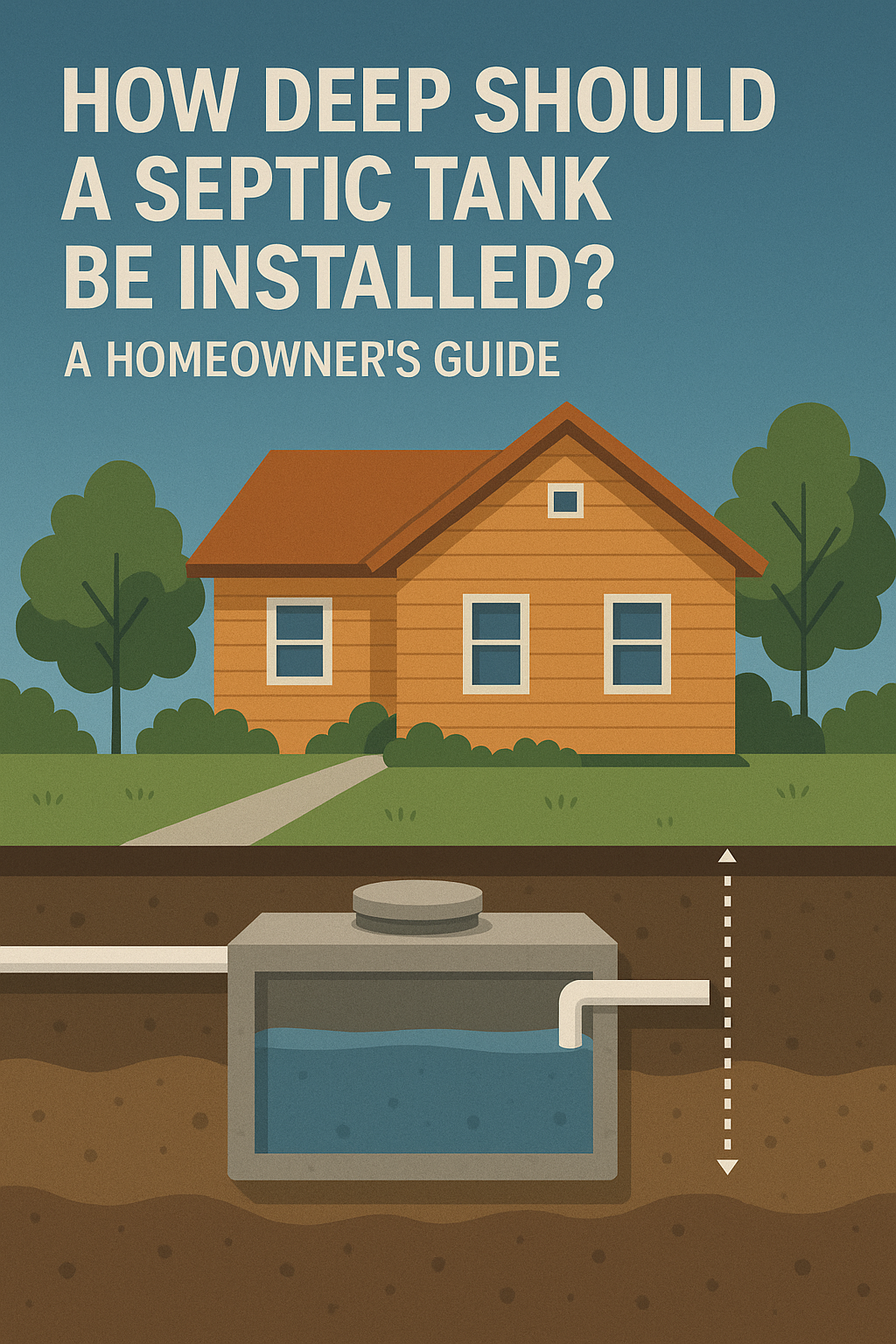When you’re working with a small property, every square foot counts – and that includes the space needed for your septic system. Whether you’re building a cozy cabin, developing a compact lot, or dealing with challenging terrain, choosing the right septic system can make the difference between a successful project and a costly headache.
The good news? Modern septic technology offers several space-saving solutions that don’t compromise on performance. Let’s dive into the five best septic systems designed specifically for small properties, so you can make an informed decision that fits both your space and your budget.
Understanding Septic Systems and Why Size Matters
Septic systems are the unsung heroes of properties without access to municipal sewage treatment. These self-contained wastewater treatment systems handle everything from your morning shower to your evening dishwashing, quietly processing waste through a combination of bacterial action and natural filtration. But here’s where it gets tricky for small property owners: traditional septic systems can require significant space for both the septic tank and the drain field.
For small properties, choosing the wrong system isn’t just inconvenient – it can be impossible to install or, worse, illegal according to local codes. That’s why understanding your options is crucial. The right system will maximize your usable property space while still meeting all health and environmental requirements.
We’re about to compare five space-saving septic solutions that have proven themselves in real-world applications. Each offers unique advantages for different situations, and one of them is likely perfect for your specific needs.
Critical Factors for Small Property Septic Selection
Space Limitations and Property Layout
Obviously, space is your primary constraint, but it’s not just about total square footage. The layout matters enormously. Some systems work better with long, narrow spaces, while others need compact but deeper areas. You’ll also need to consider setback requirements from wells, property lines, and structures. Smart tip: sketch your property layout before shopping for systems – it’ll save you time and prevent costly mistakes.
Soil Type and Percolation Rates
Your soil is either your best friend or your biggest obstacle. Sandy soils drain quickly but may not filter adequately, while clay soils provide excellent filtration but terrible drainage. A professional perc test will determine your soil’s absorption rate, measured in minutes per inch. This single number will dramatically influence which systems are viable for your property.
Local Regulations and Permitting
Here’s where many DIY enthusiasts hit their first wall: local codes vary dramatically. Some areas welcome innovative septic solutions, while others stick strictly to traditional systems. Before falling in love with any particular system, check with your local health department or building authority. Trust me, it’s much easier to change your plans than to rebuild a non-compliant system.
Installation and Maintenance Costs
Small properties often mean tight budgets, so let’s talk money. Initial installation costs can range from $3,000 for basic systems to $15,000+ for advanced treatment units. But don’t stop there – factor in ongoing maintenance costs, which can vary from virtually nothing to several hundred dollars annually. The cheapest upfront option isn’t always the most economical long-term choice.
Environmental Impact and Efficiency
Modern septic systems can actually improve water quality compared to older conventional systems. If you’re near sensitive water bodies or in an environmentally conscious community, choosing a high-performance system isn’t just good citizenship – it might be required by law.
The Top 5 Space-Saving Septic Systems: Selection Criteria
We evaluated dozens of septic technologies based on five key criteria: space efficiency, installation feasibility for small properties, proven reliability, cost-effectiveness, and regulatory acceptance. These five systems rose to the top because they consistently deliver excellent performance while working within the constraints that small property owners face.
“The biggest mistake I see with small property septic installations is choosing a system based solely on upfront cost. The best system for your property is the one that balances space constraints, soil conditions, and long-term reliability.”
– Mike Rodriguez, Licensed Septic System Designer
Quick Comparison Overview
Here’s how our five top systems stack up:
- Mound Systems: Best for poor soil drainage, moderate space requirements
- Aerobic Treatment Units: Highest treatment quality, smallest drain field requirements
- Recirculating Sand Filters: Excellent for challenging soil conditions, moderate footprint
- Chamber Systems: Easy installation, good for rocky or shallow soil areas
- Drip Distribution Systems: Ultimate space efficiency, works on slopes and irregular terrain
In-Depth Analysis: Your Five Best Options
Mound Systems: Rising Above Poor Drainage
Mound systems are the problem-solvers of the septic world. When your soil won’t cooperate – whether it’s too clay-heavy, too shallow, or has a high water table – a mound system builds its own ideal environment above ground. The system creates an artificial hill of sand and gravel that provides the necessary treatment and drainage.
How it works: Effluent from your septic tank is pumped up into a specially constructed mound of sand and gravel. As the wastewater percolates down through this engineered soil, it receives additional treatment before reaching the natural soil below.
Pros: Works in challenging soil conditions, proven technology, relatively straightforward maintenance, good treatment quality.
Cons: Visible above ground (though it can be landscaped), requires electrical pump, higher installation cost than conventional systems.
Ideal for: Properties with clay soil, high water tables, or shallow soil over bedrock. Also great for lots where a conventional drain field won’t fit but you have room for a contained mound.
Aerobic Treatment Units (ATUs): High-Tech Treatment in Compact Packages
ATUs are like having a miniature sewage treatment plant on your property. These systems use mechanical aeration to accelerate the natural treatment process, producing effluent clean enough for surface discharge in many areas.
How it works: Air is pumped into the treatment tank, creating an oxygen-rich environment where aerobic bacteria rapidly break down waste. The treated effluent is then disinfected, typically with chlorine tablets, before disposal.
Pros: Excellent treatment quality, smallest drain field requirements, works in challenging soil conditions, may allow surface discharge.
Cons: Requires electricity, needs regular maintenance, higher operating costs, more complex than passive systems.
Ideal for: Very small lots, properties near water bodies requiring high treatment levels, areas with poor soil conditions, or where regulations demand advanced treatment.
Recirculating Sand Filters: Natural Filtration, Enhanced Performance
These systems harness the natural filtering power of sand but supercharge it through recirculation. They’re particularly effective for small properties because they can achieve excellent treatment in a relatively compact area.
How it works: Partially treated effluent from the septic tank is pumped onto a bed of specially graded sand. As it percolates through, the sand provides biological and physical treatment. The effluent is then collected and either recirculated for additional treatment or sent to a small drain field.
Pros: Excellent treatment quality, works in poor soil conditions, relatively low maintenance, proven reliability.
Cons: Requires pumps and electrical power, sand may need replacement eventually, higher installation cost than conventional systems.
Ideal for: Properties with marginal soil conditions, environmentally sensitive areas, or where space constraints prevent conventional drain field installation.
“Sand filter systems are incredibly forgiving and reliable. I’ve seen them operate flawlessly for decades with minimal maintenance, even in challenging conditions where conventional systems failed.”
– Sarah Chen, Environmental Engineer and Septic Specialist
Chamber Systems: Simple, Effective, Space-Smart
Chamber systems represent an evolution of the traditional gravel drain field. Instead of using gravel, these systems employ lightweight plastic chambers that create void space for effluent storage and treatment.
How it works: Plastic chambers are placed in trenches and surrounded by soil. Effluent flows from the septic tank into these chambers, where it’s stored temporarily before infiltrating into the surrounding soil for treatment.
Pros: No gravel required (easier installation), good for rocky or difficult excavation sites, proven technology, relatively low cost.
Cons: Still requires adequate soil for treatment, may need more space than advanced treatment systems, limited applicability in very poor soils.
Ideal for: Properties with adequate soil but difficult excavation conditions, areas where gravel is expensive or hard to source, or where ease of installation is a priority.
Drip Distribution Systems: Precision Application for Maximum Efficiency
Drip distribution systems are the precision instruments of septic technology. They apply small amounts of effluent over large areas through a network of small-diameter tubing, maximizing treatment while minimizing space requirements.
How it works: Effluent is collected in a pump tank and then distributed through pressure-compensating emitters placed throughout shallow trenches. This allows for precise application rates and can work on slopes and irregular terrain.
Pros: Can work on slopes and irregular terrain, very efficient land use, excellent treatment quality, minimal surface disruption.
Cons: Requires pumps and controls, emitters can clog, needs regular maintenance, higher complexity.
Ideal for: Sloped properties, irregularly shaped lots, areas with shallow soil, or where maximum space efficiency is required.
Choosing the Right System for Your Property
Now comes the fun part: matching the perfect system to your specific situation. Start with your biggest constraint – is it space, soil conditions, budget, or local regulations? This primary limitation will usually eliminate 2-3 options immediately.
Next, consider your long-term plans. If you’re building a weekend cabin with minimal use, a simpler system might suffice. Planning a full-time residence or potential future expansion? Invest in a system with higher capacity and better treatment quality.
Don’t forget about access for maintenance. Even the best system needs occasional attention, and some remote or creatively designed installations can make routine service challenging and expensive.
“I always tell clients to think 10 years ahead. The system you install today should still meet your needs and local regulations a decade from now, even if your property use changes.”
– Tom Wilson, Master Plumber and Septic Installation Contractor
The Professional Evaluation Process
While this guide gives you the knowledge to make an informed decision, nothing replaces a professional site evaluation. A qualified septic designer or installer will conduct soil tests, review local codes, assess your specific site conditions, and provide recommendations tailored to your situation.
Expect this evaluation to include a percolation test, soil profile analysis, site survey, and regulatory review. Yes, it costs money upfront, but it’s infinitely cheaper than installing the wrong system or failing inspection.
Professional Installation: Why It Matters
Unless you’re a licensed contractor with septic experience, professional installation isn’t just recommended – it’s essential. Modern septic systems involve electrical components, precise grading, complex plumbing, and strict regulatory compliance. One mistake can result in system failure, environmental damage, or legal issues.
Certified installers bring several advantages: they understand local codes, have relationships with inspectors, carry appropriate insurance, and warranty their work. They also have the specialized equipment needed for proper installation, from laser levels for precise grading to compaction equipment for proper backfilling.
What to Expect During Installation
Professional installation typically takes 2-5 days, depending on system complexity and site conditions. The process includes excavation, system placement, electrical connections (if required), backfilling, and final grading. Your installer should handle all permit applications and inspections.
Plan for some temporary disruption to your property. Good contractors minimize damage and restore disturbed areas, but installation does require heavy equipment and excavation.
Long-Term Maintenance Considerations
Every septic system needs regular maintenance, but requirements vary dramatically between system types. Conventional systems might need pumping every 3-5 years, while ATUs require monthly maintenance visits. Factor these ongoing costs into your decision-making process.
Establish a maintenance relationship with a qualified service provider before you need emergency repairs. Regular maintenance prevents small problems from becoming major expenses.
Frequently Asked Questions
Q: How much space do I really need for a septic system on a small property?
A: It depends on your soil conditions and chosen system type. Conventional systems might need 1,500-3,000 square feet for the drain field alone, while advanced treatment units can reduce this to 500-1,000 square feet. Drip distribution systems can work in as little as 200-400 square feet with proper design.
Q: Can I install a septic system myself to save money?
A: While some jurisdictions allow homeowner installation, it’s rarely advisable. Modern septic systems require specialized knowledge, equipment, and often electrical work. Mistakes can be expensive and dangerous. Most areas also require professional design and installation for anything beyond basic conventional systems.
Q: What happens if my soil doesn’t pass the percolation test?
A: Don’t panic! Poor perc test results just mean you need an engineered solution rather than a conventional system. Mound systems, ATUs, or sand filters are specifically designed for challenging soil conditions. You might spend more upfront, but you can still have a functional septic system.
Q: How long do these systems typically last?
A: With proper maintenance, most septic systems last 20-30 years. The tank itself often lasts longer than the drain field components. Advanced treatment units may need component replacement every 10-15 years, but the overall system life is comparable to conventional systems.
Q: What’s the most common mistake small property owners make with septic systems?
A: Underestimating the importance of proper sizing and design. Many people focus solely on initial cost and choose the cheapest option, only to face problems later. The best system for your property balances upfront cost, long-term reliability, space constraints, and regulatory requirements.
Making Your Decision: Space-Smart Septic Solutions
Choosing the right septic system for your small property doesn’t have to be overwhelming. Armed with this knowledge, you can have informed conversations with professionals and make a decision that serves your property well for decades to come.
Remember, the “best” system is the one that works reliably within your specific constraints. Whether that’s a simple chamber system for straightforward conditions or a sophisticated drip distribution system for challenging terrain, the right choice is out there.
The key is working with qualified professionals who understand both the technology and your local requirements. Don’t let space constraints discourage you from developing your small property – modern septic technology offers solutions for virtually every situation.
Ready to move forward with your septic system project? The experts at SepticServiceCenter.com can help you navigate the selection process, connect you with qualified installers, and ensure your small property septic system provides years of reliable service. Contact us today for personalized guidance and professional installation services that make the most of your available space.


